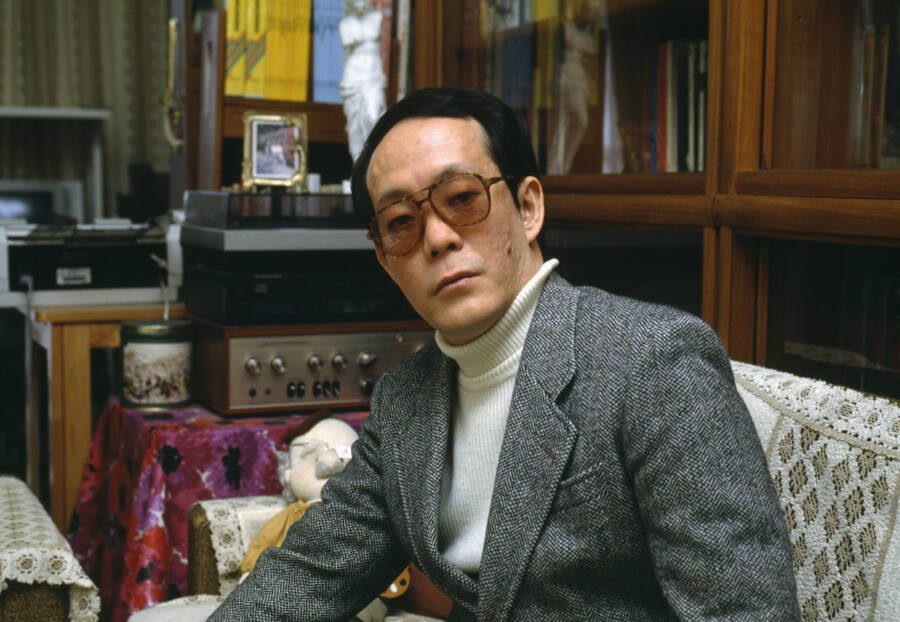When Issei Sagawa murdered, dismembered, and devoured Renée Hartevelt in 1981, he was fulfilling a dream 32 years in the making.
Sagawa, who was born in Kobe, Japan, was studying comparative literature in Paris at the time of his crime. He was almost immediately arrested and sentenced to a psychiatric hospital. But after his extradition to Japan, he was able to check himself out of a different psychiatric hospital due to a legal loophole — and remains free to this day.
In the years since, he has effectively made a living off his crime, and he’s even become something of a minor celebrity in Japan. He has appeared on numerous talk shows and written manga novels that graphically depict killing and eating Hartevelt. He has even starred in soft-core porn reenactments where he bites actors.
And throughout his life, he has been chillingly unrepentant. When he discusses his crime, it’s as if he believes it’s the most natural thing in the world. And he plans to do it again.
A Lifetime Of Cannibalistic Thoughts
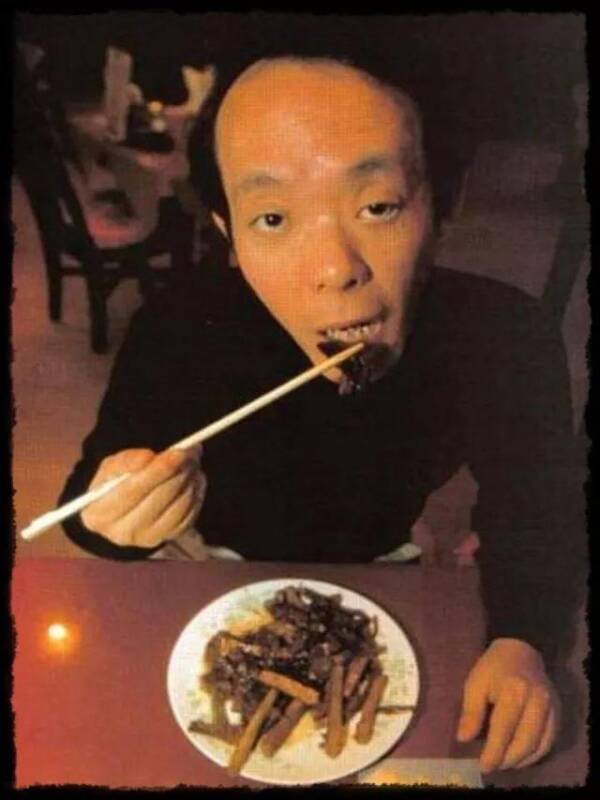
Xuanyizhi/WeiboIssei Sagawa pictured in a promotional photograph for a Japanese magazine.
Issei Sagawa was born on April 26, 1949. And for as long as he can remember, he possessed cannibalistic urges and a fascination with eating human flesh. He remembered with fondness his uncle dressing up as a monster and lowering him and his brother into a stew pot for eating.
He sought out fairy tales that involved humans being eaten, and his favorite was Hansel and Gretel. He even recalls noticing classmates’ thighs in the first grade and thinking, “Mmm, that looks delicious.”
He blames the media’s representation of Western women like Grace Kelly for sparking his cannibalistic fantasies, equating it with what most people would call sexual desire. Where other people dreamed of bedding these beautiful women, Sagawa dreamed of eating them.
Issei Sagawa says the reasons behind his cannibalistic tendencies can’t be explained to or conceptualized by anyone who doesn’t share his exact urges.
“It’s simply a fetish,” he said. “For example, if a normal man fancied a girl, he’d naturally feel a desire to see her as often as possible, to be close to her, to smell her and kiss her, right? To me, eating is just an extension of that. Frankly, I can’t fathom why everyone doesn’t feel this urge to eat, to consume, other people.”
He maintains, however, that he never thought of killing them, only “gnaw[ing] on their flesh.”
He was always short and skinny with legs that “looked like pencils,” he wrote in his best-selling book In the Fog. And he believed that at just under five-feet tall, he was too repulsive to attract the kind of physical intimacy that would have tempered his desires.
Although Sagawa did once attempt to see a psychiatrist for his urges at age 15, he found it unhelpful and retreated further into his isolated psyche. Then, in 1981, after repressing his desires for 32 years, he finally acted on them.
Issei Sagawa had moved to Paris to study literature at the Sorbonne, a public research university. Once there, he said, his cannibalistic urges took over.
“Almost every night I would bring a prostitute home and then try to shoot them from behind,” he wrote in In the Fog. “It became less about wanting to eat them, but more an obsession with the idea that I simply had to carry out this ‘ritual’ of killing a girl no matter what.”
Eventually, he found the perfect victim.
Issei Sagawa Kills And Eats Renée Hartevelt In Paris
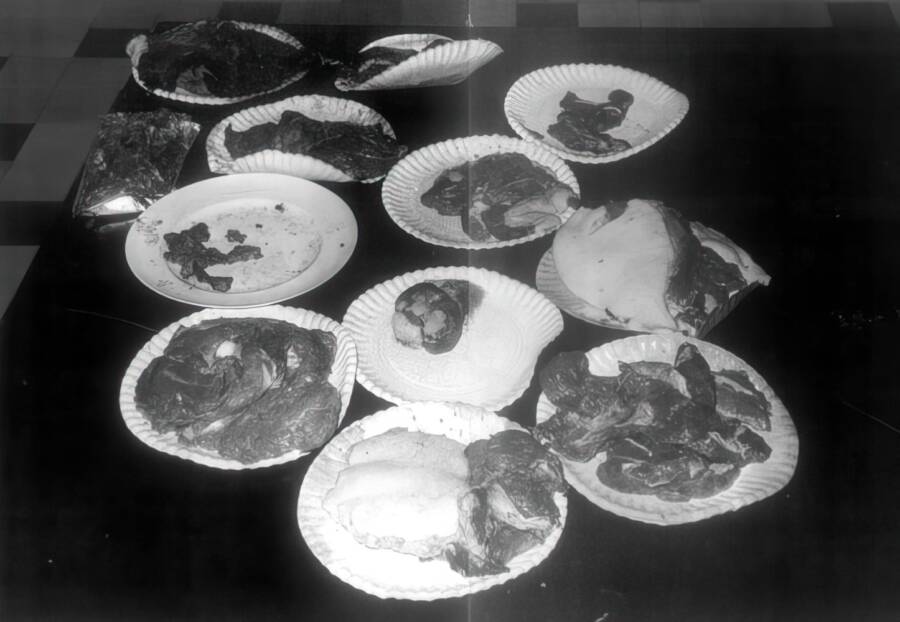
YouTubeCrime scene photos of Sagawa’s meal.
Renée Hartevelt was a Dutch student studying with Sagawa at the Sorbonne. Over time, Sagawa struck up a friendship with her, occasionally inviting her to his home for dinner. At some point, he gained her trust.
He attempted to kill her once, unsuccessfully, before actually murdering her. The first time the gun misfired when her back was turned. Though most would take this as a sign to give up, it only pushed Sagawa further down his rabbit hole.
“[It] made me even more hysterical and I knew that I simply had to kill her,” he said.
The very next night he did. This time the gun fired and Hartevelt was killed instantly. Sagawa only felt a moment of remorse before he became elated.
“I thought about calling an ambulance,” he recalled. “But then I thought, ‘Hang on, don’t be stupid. You’ve been dreaming about this for 32 years and now it’s actually happening!’”
Immediately after killing her, he raped her corpse and began cutting her open.
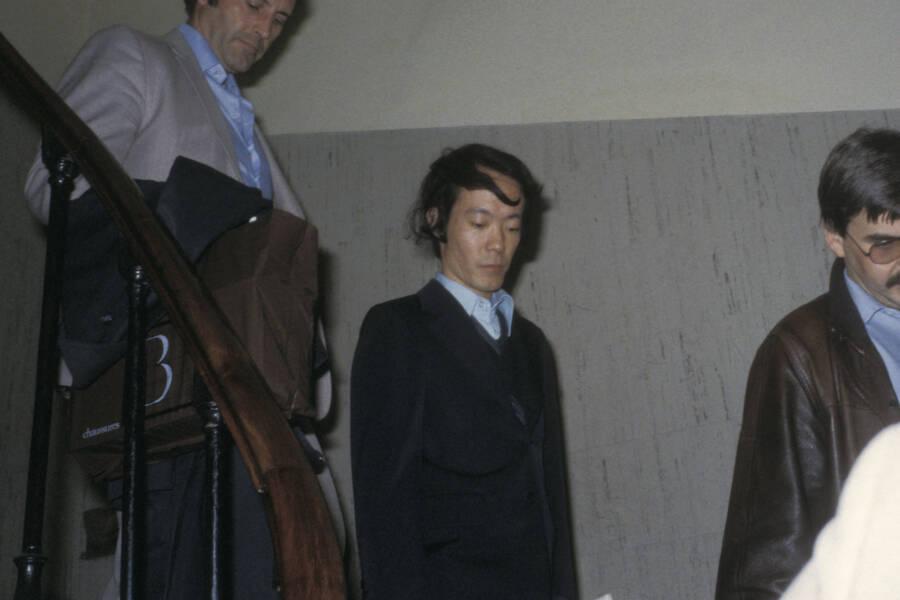
Francis Apesteguy/Getty ImagesSagawa being led out of his apartment following his arrest in Paris, July 17, 1981.
“The first thing I did was cut into her buttock. No matter how deep I cut, all I saw was the fat beneath the skin. It looked like corn, and it took a while to actually reach the red meat,” Sagawa recalled.
“The moment I saw the meat, I tore a chunk off with my fingers and threw it into my mouth. It was truly a historical moment for me.”
Ultimately, he said his only regret was that he hadn’t eaten her while she was alive.
“What I truly wished was to eat her living flesh,” he said. “Nobody believes me, but my ultimate intention was to eat her, not necessarily to kill her.”
Two days after killing Hartevelt, Sagawa disposed of what remained of her body. He had eaten or frozen most of her pelvic region, so he put her legs, torso, and head into two suitcases and hailed a cab.
The taxi dropped him off at the Bois de Boulogne park, which had a secluded lake inside it. He had planned to drop the suitcases in it, but several people noticed the suitcases dripping blood and notified the French police.
Issei Sagawa Offers A Straightforward Confession For His Crime
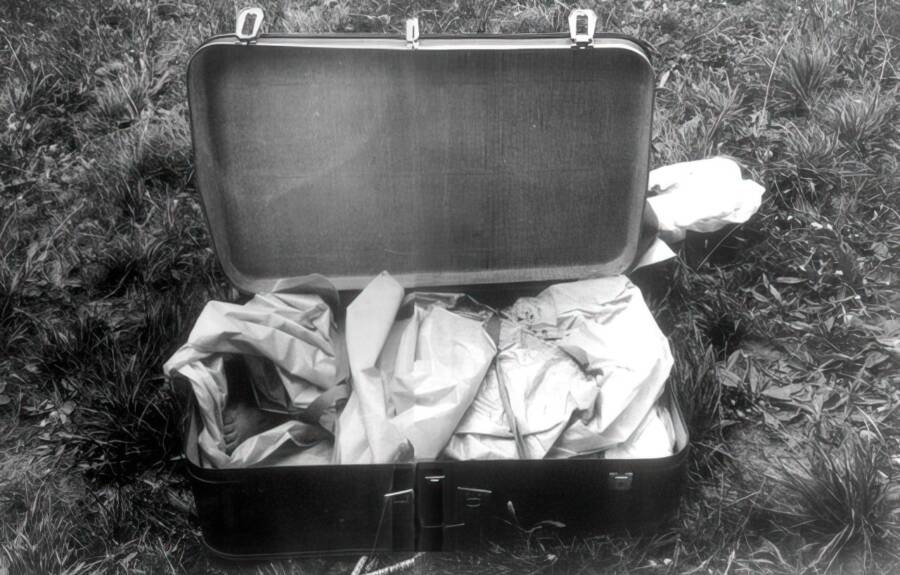
YouTubeThe suitcase that was filled with Renée Hartevelt’s remains.
When police found Sagawa and questioned him, his response was a simple admission: “I killed her to eat her flesh,” he said.
Issei Sagawa awaited his trial for two years in a French prison. When it was finally time for him to be tried, French judge Jean-Louis Bruguiere declared him legally insane and unfit to stand trial, dropping the charges and ordering him to be held indefinitely in a mental institution.
They then deported him back to Japan, where he was supposed to spend the rest of his days in a Japanese mental hospital. But he didn’t.
Because the charges in France had been dropped, the court documents were sealed and couldn’t be released to Japanese authorities. Therefore, the Japanese had no case against Issei Sagawa and no choice but to let him walk free.
And on Aug. 12, 1986, Issei Sagawa checked himself out of the Matsuzawa Psychiatric Hospital in Tokyo. He has been free ever since.
Where Is Issei Sagawa Now?
Noboru Hashimoto/Corbis via Getty ImagesIssei Sagawa still walks free through the streets of Tokyo.
Today, Issei Sagawa walks the streets of Tokyo where he lives, free to do as he pleases. A terrifying thought when one hears that the threat of life in prison hasn’t done much to quell his urges.
“The desire to eat people becomes so intense around June when women start wearing less and showing more skin,” he said. “Just today, I saw a girl with a really nice derrière on my way to the train station. When I see things like that, I think about wanting to eat someone again before I die.”
“What I’m saying is, I can’t bear the thought of leaving this life without ever tasting that derrière that I saw this morning, or her thighs,” he continued. “I want to eat them again while I’m alive, so that I can at least be satisfied when I die.”
He’s even planned out how he will do it.
“I think either sukiyaki or shabu shabu [lightly boiled thin slices] is the best way to go, in order to really savor the natural flavor of the meat.”
In the meantime, however, Sagawa has refrained from cannibalism. But that hasn’t stopped him from capitalizing on his crime. He wrote restaurant reviews for the Japanese magazine Spa and enjoyed success on a lecture circuit talking about his urges and crime.
And to date, he has published 20 books. His most recent book is called Extremely Intimate Fantasies of Beautiful Girls, and it is filled with pictures drawn by himself as well as by famous artists.
“I hope that people who read it will at least stop thinking of me as a monster,” he said.
Sagawa allegedly suffers from diabetes and suffered two heart attacks in 2015. He is now 72, lives with his brother in Tokyo, and continues to garner media attention. And in 2018, french filmmakers recorded the two talking. Sagawa’s brother asks him, “As your brother, would you eat me?”
The only response Sagawa gives is an empty stare, and silence.
Read Also: Technology is creating a new generation of illiterates in Nigeria – Prof Wole Soyinka
